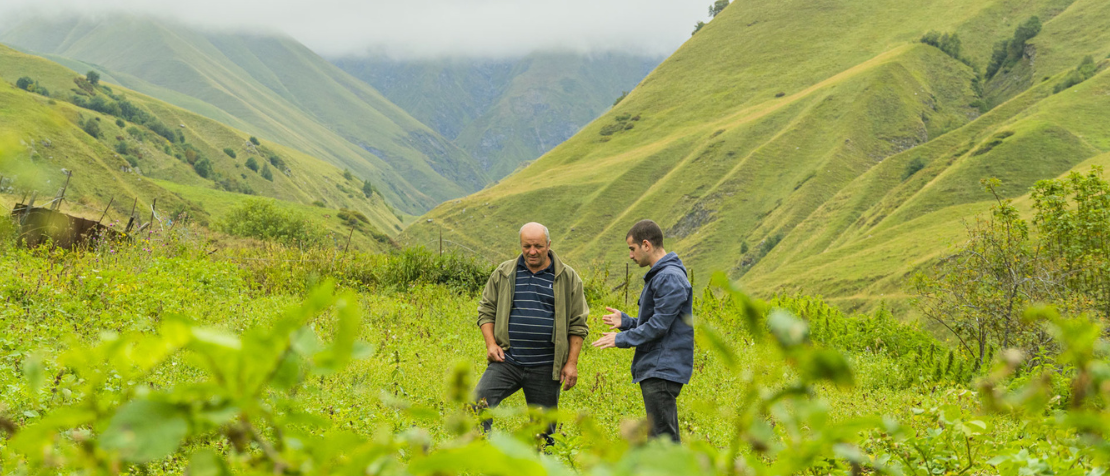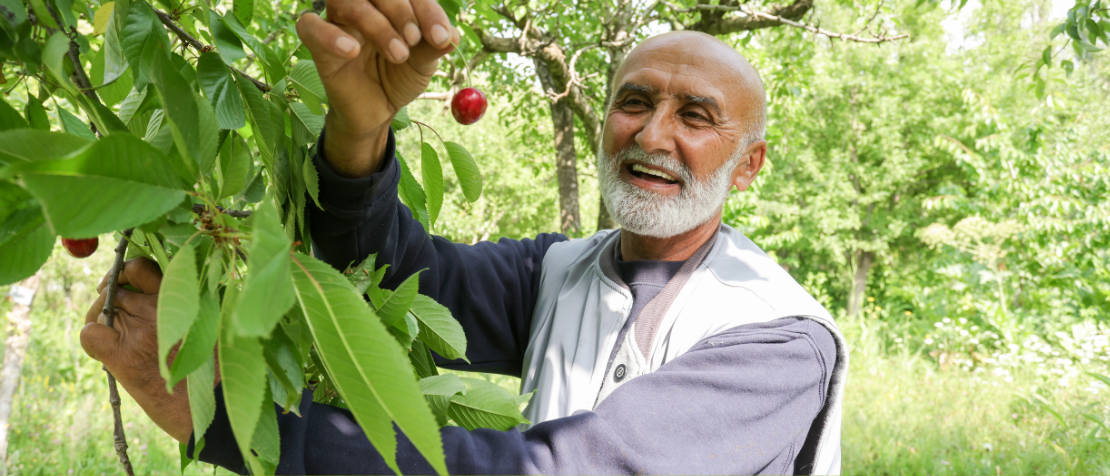
Making sustainable bioeconomies a reality in Europe and Central Asia
FAO/Guram Saqvarelidze
22/08/2025
Protecting natural resources from overconsumption and maintaining the planet’s ecological balance are growing concerns on a global level, and finding adequate, tailored and local solutions to address these issues is crucial. The concepts of sustainable bioeconomy, low-carbon economy, circular economy and biobased economy are being used and increasingly recognized within the trend towards sustainability, and they are set to drive systemic change and respond to economic, social and environmental challenges such as increasing ecosystem pressure, climate change and pollution generation, which affect countries, economies and local communities.
“The transition towards a sustainable bioeconomy is more than an environmental necessity; it is an opportunity to reshape agrifood systems for the better,” said Alicja Kacprzak, Forestry Officer of the Food and Agriculture Organization of the United Nations (FAO). “Most importantly, this transition is not about replacing existing systems with something entirely new, but about drawing strength from traditional agricultural methods and the wisdom of the local communities that have sustained these systems for generations, to ensure that time-tested practices remain at the heart of innovation.”
A 2025 report by FAO reveals how countries across Eastern Europe and Central Asia are turning to bioeconomy strategies to transform their agrifood systems, enhance sustainability and revitalize rural economies. The publication, Promoting bioeconomy through agriculture practice in Eastern Europe and Central Asia, offers a comprehensive regional analysis, pinpointing key agricultural practices that align with bioeconomy principles. It delves into production trends and regional agricultural systems and examines how bioeconomy strategies can be integrated across diverse subregions from the Western Balkans to Central Asia.
“There is no one-size-fits-all solution within this realm,” Kacprzak said. “Modern bioeconomy approaches adapt to existing geographical conditions and prevailing agricultural practices while building on local experience, cultures and traditional methods that have been in place for centuries.”
Still, examples of proven bioeconomy practices can inspire others to adapt similar approaches and contribute to more sustainable food production and agricultural practices.
Bioeconomy toolkit around the region
There are several beneficial and relevant approaches implemented in Europe and Central Asia, moving towards sustainable and circular bioeconomies – such as climate-smart agriculture, bioenergy, pastoralism, free-range animal husbandry and sustainable forest management – aimed at bolstering food security and profitable farm income, protecting the environment, boosting the natural resource base and preserving soil fertility.
Say no to droughts
Climate-smart agriculture, an approach launched by FAO in 2010, aids green and climate-resilient agrifood systems transformation while supporting efforts to accomplish the Sustainable Development Goals (SDGs) and the Paris Agreement. Combating the effects of droughts is crucial in the Western Balkans, as many countries in the region are prone to them, and this problem is exacerbated by the effects of climate change.


In response, Albania and Bosnia and Herzegovina are prioritizing the rehabilitation and modernization of their irrigation systems in a manner similar to Serbia, where the emphasis is on flood risk reduction and water resources management. © FAO/Gent Skhullaku (1) and © FAO/Emilija Marić (2)
No fossil fuel? No problem
Ukraine is scaling up bioenergy use, set to meet 40 percent of the country’s heating energy consumption with bioenergy by 2035. The country plans to replace 3 billion m³ of natural gas with biomass for district heating, and it also aims to use sunflower seed husks instead of natural gas in lime production, which is especially important for making iron and steel. Bioenergy offers a strategic alternative to fossil fuel sources, as it is adaptable to existing critical infrastructures such as gas pipelines and heat engines.
Tapping into natural strengths
Georgia, for example, leverages organic production – a holistic production management system promoting agroecosystem health, aimed at sustaining the health of soils, ecosystems and people – specifically in its mountainous areas, where land is free from intense chemical inputs. The sector mostly focuses on vegetables and cereals but also extends to animal products, aquaculture and fodder.
Turning over new leaves

As Central Asian countries are battling soil degradation and dry spell phenomena, they are turning to agroforestry – a dynamic, ecologically based bioeconomy resource management system that aims to diversify production through integrating trees on farms and in the agricultural landscape. © FAO/Didor Sadulloev
In southern Kyrgyzstan, for example, managed walnut woodland is used for non-timber forest products associated with hay harvesting. In Uzbekistan, fruit trees associated with home gardens are widely recognized as helping with subsistence and income diversification. Tajikistan takes advantage of alley cropping, where crops are grown between tree lines, and in mountainous areas, farmers plant apple trees that tolerate rainfed conditions.
Shifting the paradigm from intensive agriculture towards sustainable bioeconomy
With existing agricultural practices straining natural resources and generating significant waste and food loss, the report emphasizes the need for a move towards a sustainable and circular bioeconomy. Examining current trends in Europe and Central Asia, FAO advocates for the transformation of agrifood systems in this region to achieve more efficient natural resource management through the development of national bioeconomy strategies and targeted policies to better the sector’s economic competitiveness and, at the same time, reduce food loss and waste.
